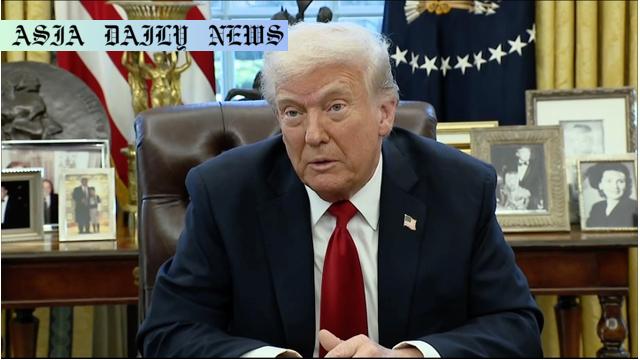Tariff – The Trump administration now imposes a 25% tariff on all auto imports, effective from 1 pm Thursday, Japan time.
Tariff hike imposes a 25% duty on all auto imports to the US.
Potential extension of tariffs to auto parts by May 3.
Aimed to combat unfair competition and retain US jobs.

The Introduction of the 25% Tariff on Auto Imports
On Thursday, the Trump administration enacted a significant change in its trade policy by introducing a 25% tariff on all auto imports. This controversial policy took effect at 1 pm (Japan time), sparking debates about the potential economic impacts. President Trump signed the executive order back in March, citing the need to address what he perceives as unfairly low pricing of foreign vehicles entering the U.S. market. His administration believes this measure is intended to protect domestic auto manufacturers and revive job growth in the U.S. auto sector. By imposing this hefty duty, the president aims to curtail automobile imports, push consumers towards U.S.-made options, and ultimately deter outsourcing by American manufacturers.
Impact on Auto Parts and Future Outlook
While the tariff presently applies to complete vehicles, the president has indicated his intention to extend the policy to cover auto components, including critical parts like engines, by May 3. The move, if implemented, could disrupt various aspects of the global supply chain and cause ripple effects throughout international trade practices. For many automakers relying on foreign-made components to produce vehicles sold in America, this policy raises questions about cost, supply chain stability, and workforce retention. The uncertainty stemming from this prospective levy signals potentially higher car prices as higher production costs are passed down to consumers.
Justification and Long-Term Effects
President Trump has consistently maintained that the tariffs are not just necessary but justifiable. According to the administration, foreign imports have long thrived at the expense of American factories, leaving many U.S.-based workers unemployed due to outsourcing practices and factory shutdowns. With this step, the administration claims it is leveling an uneven playing field. However, critics contend that such measures could have long-term consequences. The heavy tariffs might spur retaliatory actions from foreign governments, exacerbating trade tensions and potentially igniting a trade war. While the policy aims to benefit American manufacturers and workers, it could equally burden U.S.-based consumers wary of steep car prices.
Potential Ramifications on Global Trade
Economists and trade experts are divided regarding the potential ramifications on global commerce. On one side, proponents suggest the tariffs will strengthen domestic manufacturing and reduce dependency on imported goods. On the other hand, skeptics argue that such measures could isolate the U.S. from its trade partners, harm diplomatic ties, and lead to a contraction in global trade. Many predict foreign nations imposing similar retaliatory tariffs on U.S.-made products, thereby causing ripple effects across industries beyond the automobile sector.
Conclusion
The enactment of the 25% tariff on automobile imports represents a bold, albeit contentious, move in the Trump administration’s trade policy. Time will reveal whether this measure successfully revitalizes the American auto sector or inadvertently causes broader economic instability. As nations and industries brace for adjustments, the global trade landscape finds itself at a potential crossroads. Analysts and citizens alike will keenly observe the unfolding consequences of this powerful policy change.



Commentary
A Bold Move or an Economic Gamble?
The introduction of a 25% tariff on all auto imports marks a significant turn in U.S. trade policy, one that mirrors President Trump’s longstanding emphasis on protecting American jobs and industries. On paper, such measures may seem beneficial—or even necessary—to bolster domestic auto manufacturers. By discouraging external competition and incentivizing local production, the administration aims to keep factories operational and retain jobs within U.S. borders. However, as with all government initiatives, the devil lies in the details.
The Domino Effect
While the intention behind the tariffs is ostensibly to nurture economic self-reliance, the practical implications might spell trouble, especially for everyday consumers. For one, with imports becoming more expensive, car buyers in the U.S. might be forced to pay higher sticker prices. The additional production costs incurred from sourcing domestic components could also further inflate market rates, creating strain on household budgets. Not to mention, smaller automakers who rely heavily on foreign parts might struggle to adapt, leading to layoffs or reduced productivity—undermining the very goals this policy seeks to achieve.
The Risks of Retaliatory Actions
On the international front, this policy risks antagonizing key trade partners. History teaches us that protectionist policies often invite retaliation. Foreign governments could respond with their own tariffs on U.S. goods, triggering a cascade of economic challenges for other sectors, such as agriculture and technology. Trade wars, as economists suggest, rarely result in outright winners; instead, they isolate economies, foster inefficiencies, and ultimately hurt consumers worldwide.
A Need for Balanced Strategy
Safeguarding national industries is undoubtedly an important goal, but it needs to be achieved through a balanced and inclusive strategy. Rather than solely relying on punitive measures, perhaps collaborative efforts with automakers and foreign governments could yield better results. Investment in technology, innovation, and re-skilling programs for American workers may help achieve the same goals without entangling the global trade system. Only time will tell if this tariff brings lasting benefits or serves as a cautionary tale for protectionism in an interconnected world.